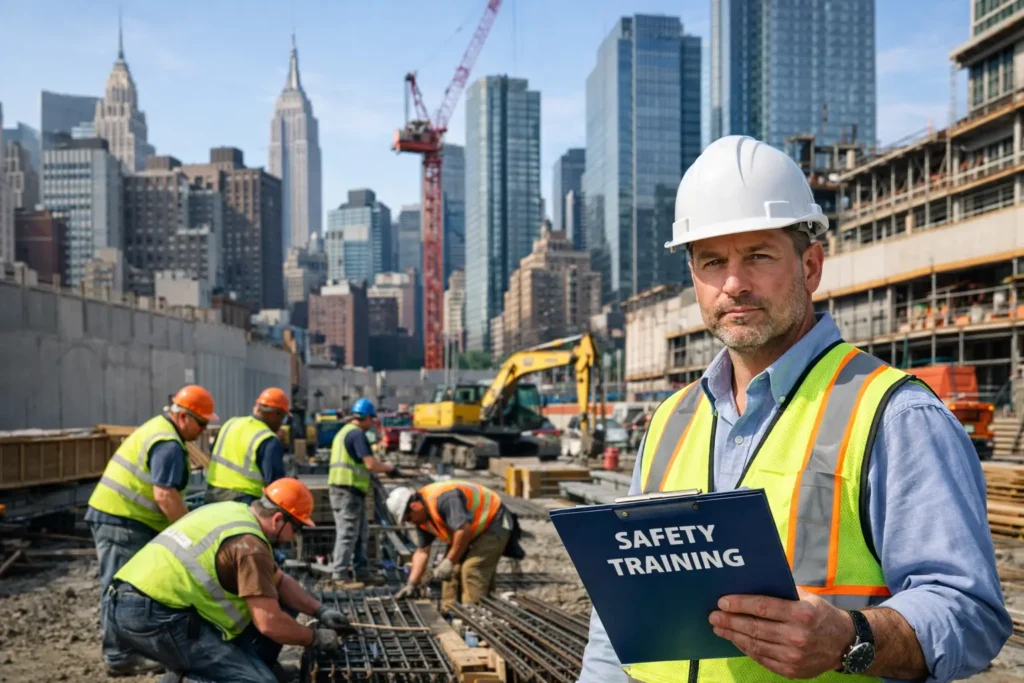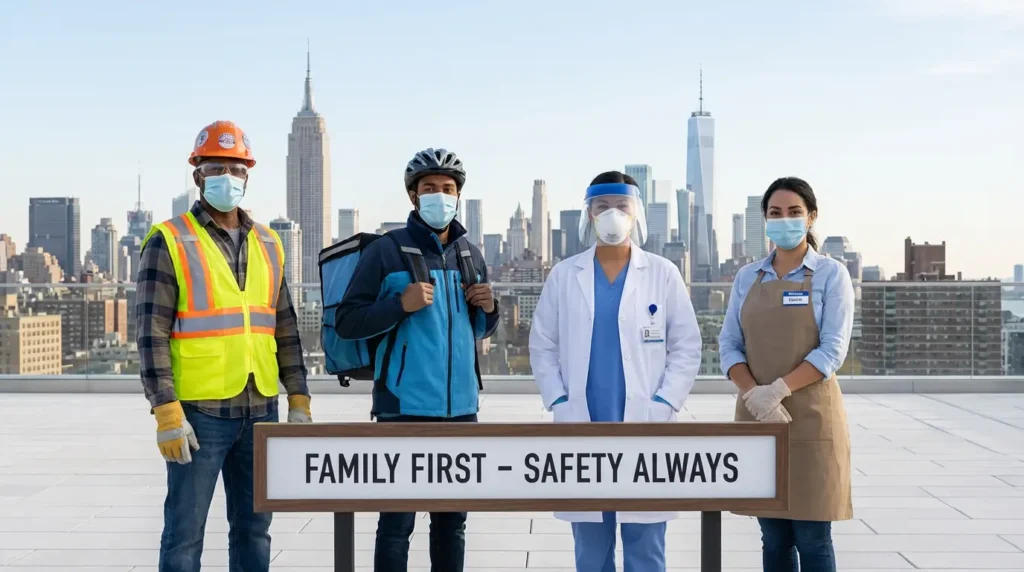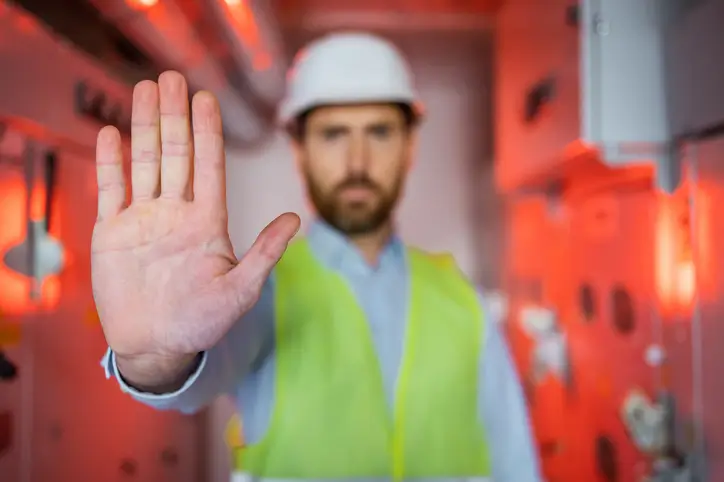Top OSHA Violations in New York: A Workplace Safety Guide
Updated on:
Published on:
January 1, 2025
In New York, safety at work is paramount, especially in construction, manufacturing, and industries that conduct warehousing, where many risks are experienced. However, we often find OSHA violations that not only endanger employees but also cost employers thousands of dollars in penalties. Knowledge on the part of OSHA most often violated makes it easier for workplaces to acknowledge problem areas and do something about it to enhance adherence.
This article sheds light on the most frequently violated OSHA standards encountered in New York workplaces with the consequences for employees.
1. Fall Protection (29 CFR 1926.501)
Another year again, employers are highly out of violation of fall protection according to OSHA reports; especially in New York construction sites. Major causes of work-related death risks include falls from height, including scaffolds or ladders, or working near unprotected edges.
- Common Issues: Employers don’t usually use the right kind of protective gear like guardrails, harnesses, or safety nets during construction. Employees may also never be trained on how best to use this equipment, and this actually poses some danger to their lives.
- Impact: Falls are likely to cause serious harm or death or even only lead to severe or permanent damage. OSHA requires protection from falls when workers are working at six feet or more in construction activities.
- Prevention: Employers are required to protect their employees to ensure that they can work safely, provide and display guardrails, and perform inspections and training on falls.
2. Hazard Communication (29 CFR 1910.1200)
A hazard communication violation is an act by the employer in which he has omitted to give his employees information on the hazards in the workplace. It covers many sectors such as manufacturing, laboratory, or maintenance industry.
- Common Issues: Employers, for instance, fail to label containers correctly, avail SDS, and train staff in chemical hazards.
- Impact: Lack of understanding or knowledge of the chemicals makes workers prone to poisonous effects, burns, respiratory ailments, and other infections.
- Prevention: The employers must develop and document a hazard communication program, include proper labeling, and provide effective employee training concerning the chemicals they use.
3. Scaffolding Safety (29 CFR 1926.451)
Scaffolding violations are another common OSHA citation for the New York workplace and are mostly experienced by construction industries. Lack of proper scaffolding significantly threatens falls and collapses.
- Common Issues: Many cases have been reported to have arisen due to wrong erection, lack of protection railing, or failure to conduct regular scaffold inspections.
- Impact: Scaffolding accidents are heartbreaking since they cause loss of lives, loss of time as well as losses from contracts.
- Prevention: Employers must also ensure that they erect scaffolding correctly. The scaffold has to be inspected by an identifiable competent person, and the scaffold must be checked to ensure it is provided with work clause protection systems.
4. Ladders (29 CFR 1926.1053)
Many construction projects utilize ladders for access and maintenance, but misuse or defective ladders are common causes of OSHA violations. New York workers frequently encounter ladder-related accidents in their workstations.
- Common Issues: Employees may not have safe ladders, use them incorrectly, or check them for problems as their employers should.
- Impact: Falls or collapses from a ladder are possible, with the potential for fractures, head injuries, or even death.
- Prevention: Employers have a duty to ensure that they get the right ladders, fix them in the right places, and enshrine good practices that check on the unsafe practices that may occur.
5. Respiratory Protection (29 CFR 1910.134)
Respiratory protection violations are prevalent in establishments that expose their employees to airborne hazards, such as dust, fumes, or hazardous chemicals. These are common in industries such as construction, manufacturing, and health services.
- Common Issues: Some employers may not even offer respirators, perform a fit test, or offer no respiratory protection program at all.
- Impact: Long-term exposure to airborne hazards causes respiratory diseases, lung disorders, and chronic diseases.
- Prevention: Employers have to evaluate the quality of air, supply correct protective masks, and teach employees how to wear and service them correctly.
6. Lockout/Tagout (29 CFR 1910.147)
Lockout/Tagout violations occur when employers fail to control hazardous energy during equipment maintenance or repairs. These violations are particularly common in manufacturing and maintenance settings.
- Common Issues: Employers may neglect to implement energy control procedures or provide training on proper lockout/tagout practices.
- Impact: Workers risk electric shocks, burns, or other injuries when machinery is accidentally energized.
- Prevention: Employers must establish energy control programs, provide lockout/tagout devices, and train workers on safety protocols.
7. Machine Guarding (29 CFR 1910.212)
Machine guarding violations involve inadequate safety measures to protect workers from dangerous machinery parts. These violations often occur in manufacturing and industrial workplaces.
- Common Issues: Machines may lack proper guards, or workers may not be trained to recognize machine hazards.
- Impact: Contact with unguarded machinery can result in amputations, crushed limbs, and other severe injuries.
- Prevention: Employers must install appropriate guards, conduct safety inspections, and train workers on safe machine operation.
8. Electrical Safety (29 CFR 1910.303)
Electrical safety violations are frequently cited in workplaces where improper wiring, overloaded circuits, or faulty equipment create hazards.
- Common Issues: Employers may fail to maintain electrical systems, provide proper training, or inspect equipment regularly.
- Impact: Electrical hazards can cause shocks, fires, or fatal electrocutions.
- Prevention: Employers must adhere with OSHA’s electrical standards, ensure regular maintenance, and provide proper safety training.
Conclusion
OSHA in New York ensures that all clients, employees, contractors, and employers are protected from work-related injuries, diseases, and deaths. The essential OSHA violations, such as fall protection, initiating safety communication, scaffolding, ladders, and respiratory protection, demonstrate the societal importance of guaranteeing protection measures.
Employers can only ensure OSHA because the appropriate training, equipment, and workplace inspections are mandatory. To that end, by following the laws in the following areas, New York workplaces can improve how they address these issues and make their environments safer for their workforce. Prefacing safety not only shields the workers but also increases productivity and decreases losses in fines for the employer.
Related Posts

NY OSHA 30 vs Federal OSHA 30: Key Differences

How Mayor-Elect Mamdani Can Improve Worker Safety in NYC



